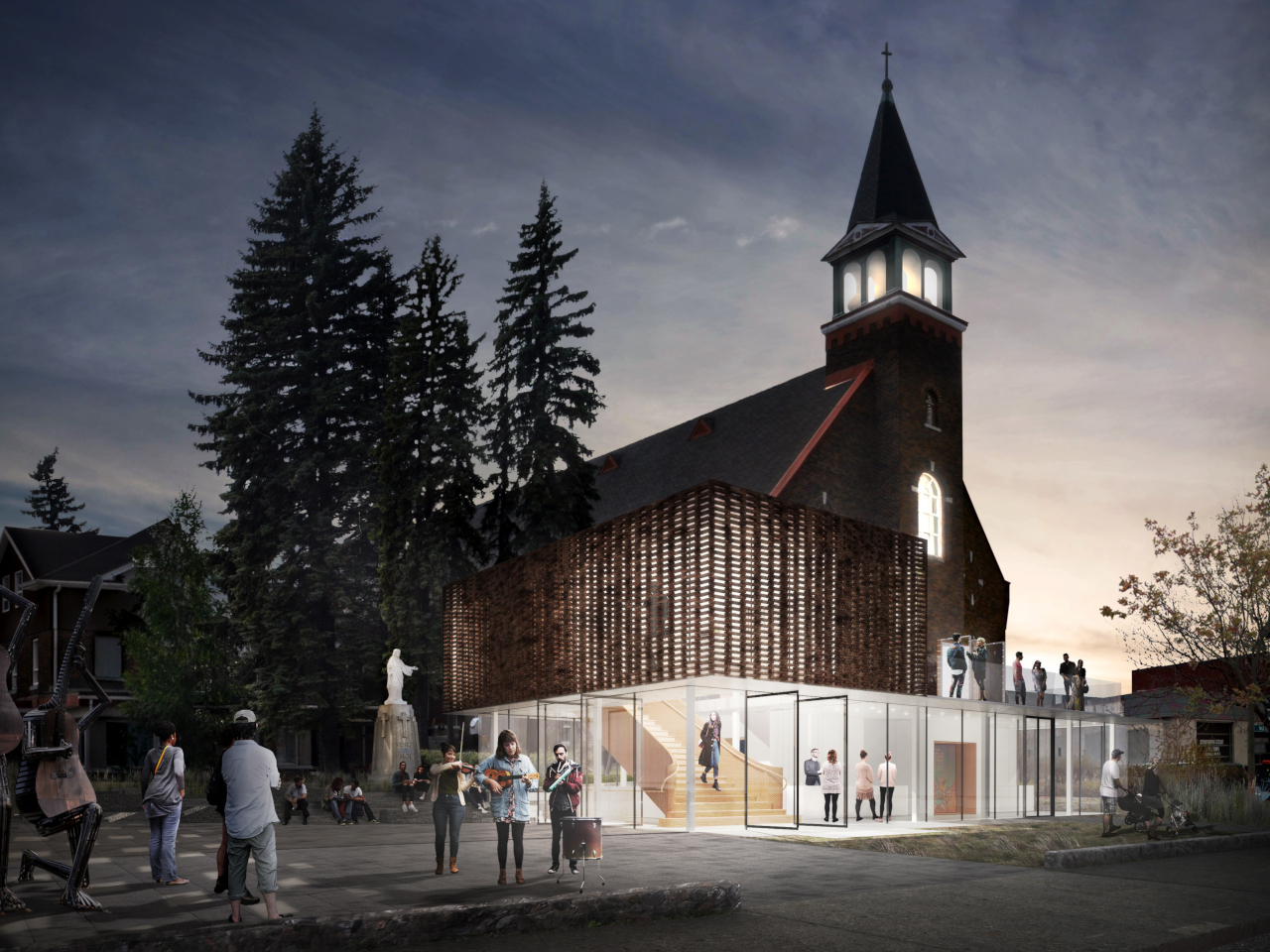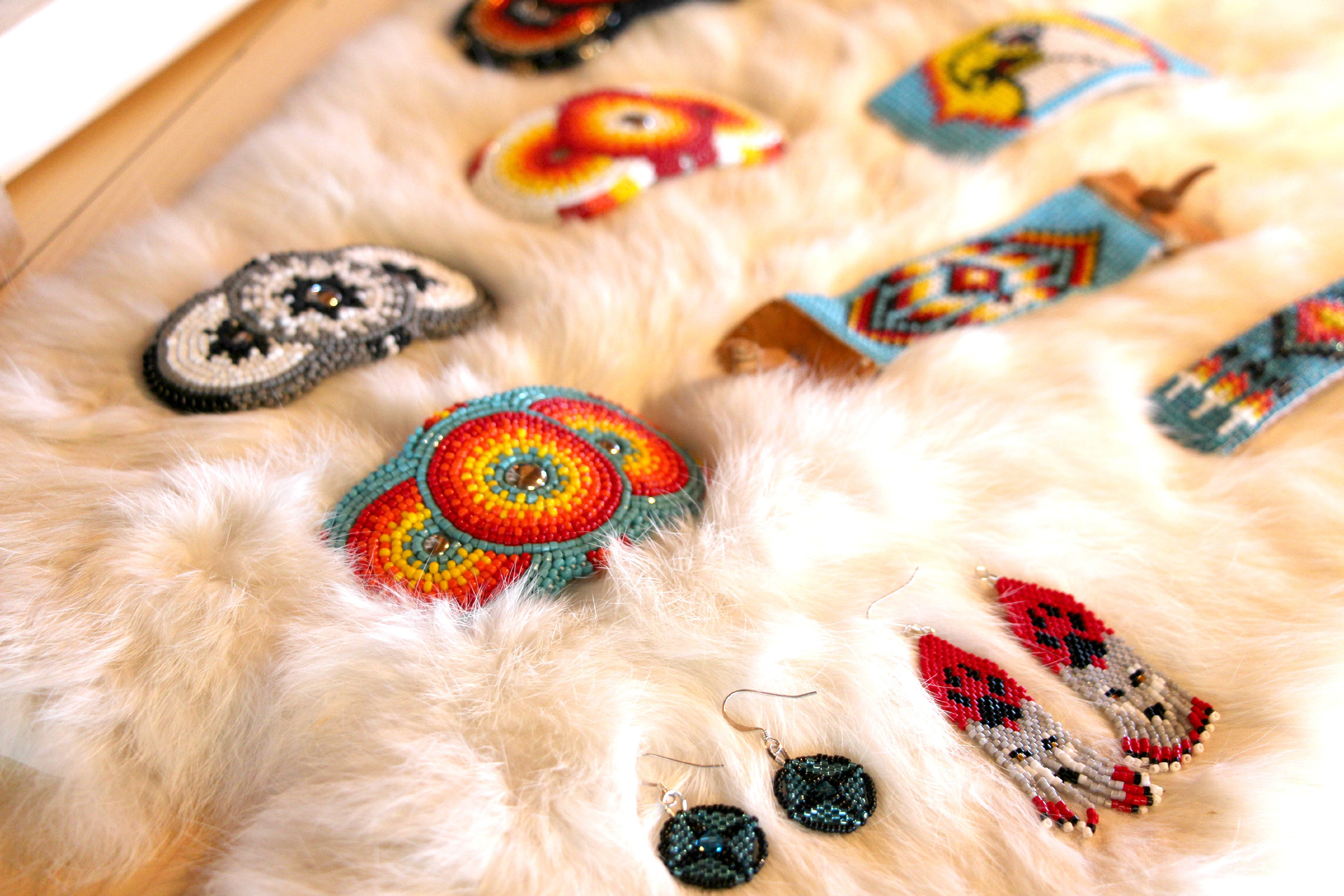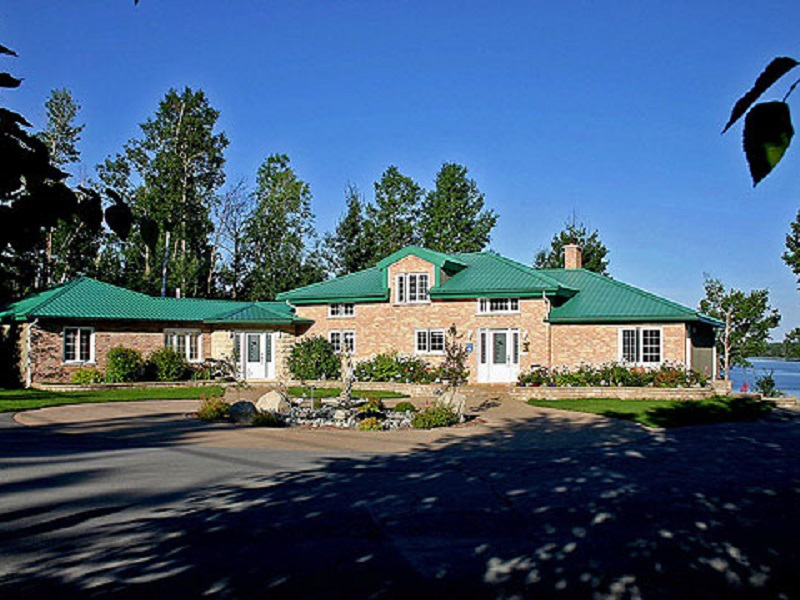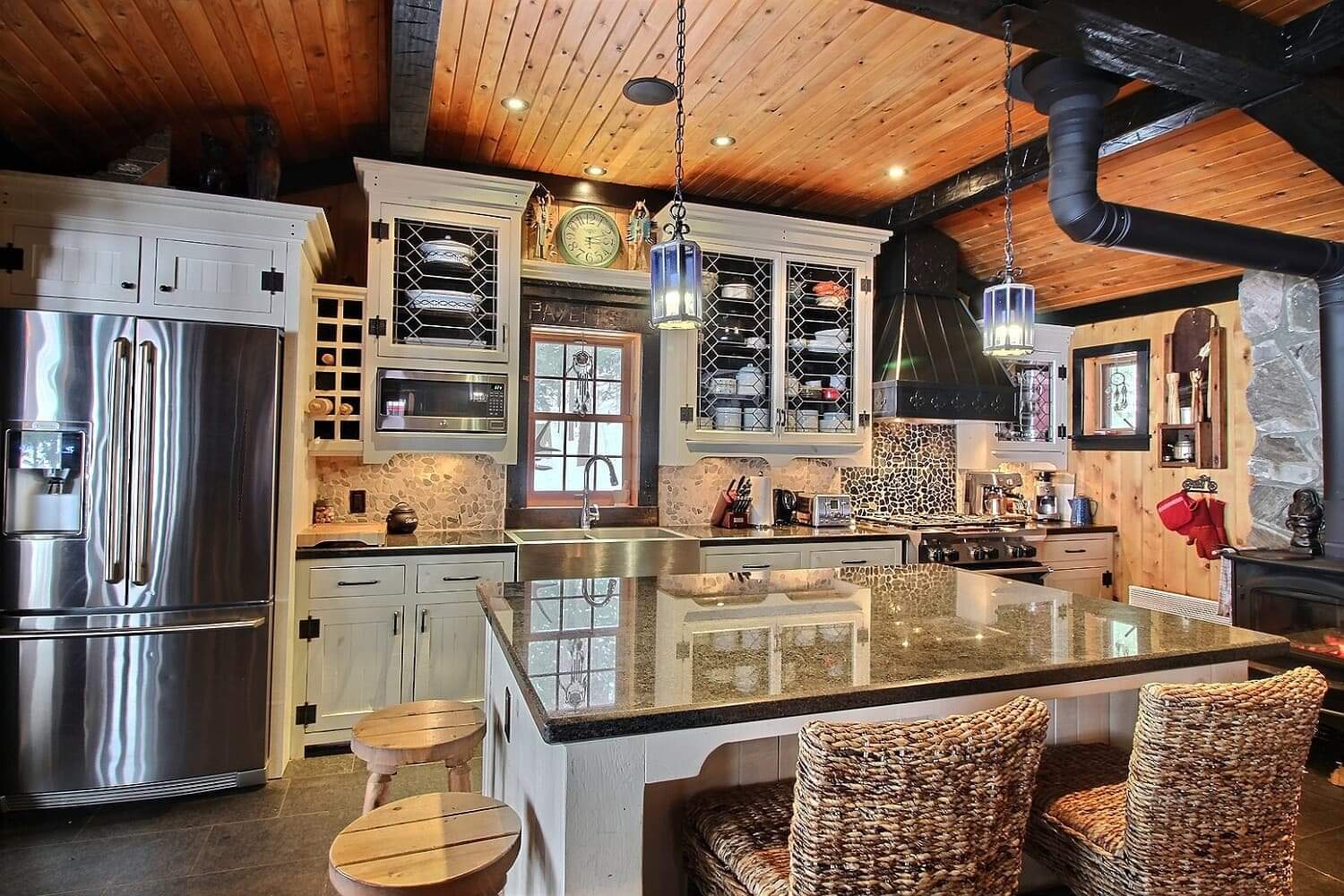Frequently Asked Questions
There are a lot of rumours going on about the Abitibi-Témiscamingue region: stories about mines, mosquitoes, black spruce forests, lakes and rivers, festivals with a unique atmosphere, and talented and bold artists, just to name a few. Some rumours are true, some are false, and some are somewhere in between. We have made a list of some frequently asked questions and have answered them (with complete objectivity, we swear) to help sort them out.
WHAT DOES ABITIBI-TÉMISCAMINGUE MEAN?
Long before the arrival of the Europeans, native peoples were travelling through the Abitibi-Témiscamingue territory. The Anicinabek and Cree were the nations who visited the territory then. The words Abitibi and Témiscamingue come from the Anishinabe language. They were used to describe the territory simply and effectively. At that time—7,000 years ago—, people didn’t have time to fuss over details.
Abitibi means “where the waters separate”. This part of the region is located on a watershed divide, a boundary separating a territory in one or more watersheds. The waters flowing northward will go to Hudson Bay and the waters flowing southward will eventually reach St. Lawrence River. Today, you can observe and learn more about this divide at the Aiguebelle National Park.
Témiscamingue means “lake with deep waters” since Lake Timiskaming has an average depth of 120 metres.
CONSIDERING THAT THE REGION IS YOUNG, WHAT IS THE INTEREST FROM A HISTORICAL POINT OF VIEW?
It is often said that the Abitibi-Témiscamingue is a young region because the colonization was late. The oldest city, Ville-Marie, was officially founded in 1897, over 120 years ago, while Rouyn-Noranda and Val-d’Or have not yet celebrated their centennial. There are also two important things to take into consideration.
First, long before the official foundation of the cities that we know today, the territory was inhabited for thousands of years by Aboriginal peoples, mainly the Cree and Anicinabek. Today, there are seven Anicinabek communities in the region and the history, traditions and knowledge of these communities are being more and more promoted. You can visit various tourist attractions directly in the communities or in the surrounding towns to learn more about the rich history and culture of these communities.
Moreover, even though short, the history of the region is rich, amazing, multicultural, and marked by citizen fights, audacity, creativity, tenacity and the festive spirit of its inhabitants. The early years of the various boomtowns are reminiscent of the atmosphere of the best westerns. Our story is documented by passionate historians and showcased in many museums and historical sites.
HOW DO I GET HERE AND HOW LONG DOES IT TAKE?
You can come to the region by car, bus, plane or train. Some others are biking, walking or even cross-country skiing (!), but that’s another story.
Let’s say you are in Montréal. It will take you one hour by plane or around 6.5 to 7.5 hours by car to reach one of the entry points to the region: Val d’Or (La Vérendrye wildlife reserve by road 117) or Ville-Marie (highway 417 to Ottawa then road 17). You’ll have to drive an additional hour and a half to reach Rouyn-Noranda.
If you choose to take the bus, the trip will probably be a few hours longer. But you will have access to the WiFi for free so you’ll be able to entertain yourself while feeling safe, especially if the road conditions are bad.
You can also take the train, but you’ll have to see it as an experience. It’s a unique opportunity to discover a territory as mysterious as ours. We recommend reading the article “Montréal-Senneterre : voyage dans un train mythique” by Jocelyne Saucier, author from Rouyn-Noranda, in which she tells the story of her trip from Montréal to Senneterre by train. This article has inspired her to write her latest novel And Miles To Go Before I Sleep.
ONCE I AM HERE, HOW DO I GET AROUND?
Considering the distance between towns in the region, you should ideally be independent transport-wise, i.e. have access to a car. However, there are intercity transportation services and carpooling options.
That said, in most towns, you’ll be able to walk or bicycle almost everywhere since most are relatively small. In some towns, there are bike rental services or dedicated walkways.
WILL I BE ABLE TO FUEL UP ON MY WAY?
Don’t worry, the longest distance that you will have to drive between two gas stations is 150 km. So you only have to do a bit of planning. You’ll be able to stop at Le Domaine in the La Vérendrye wildlife reserve. However, if you travel at night, you will have to be more cautious since some stations close at 11:00 p.m., like most in the province of Quebec.
IS THE FOOD GOOD?
Oh yes! And it keeps getting better! We have seen an enormous dynamism in the region in recent years. Many restaurants opened and contributed to diversifying the offer. The chefs are showcasing local products using their creativity and uniqueness. They have a close relationship with the customers and offer them a genuine and warm welcome. Whether you are looking for fine dining, exotic food, institutions that have been around for generations, a good meal in a good atmosphere, breakfast, small cafés or a microbrewery, you will find something to your taste. The time is long gone when the only options were fast food or large restaurant chains in the region.
We also invite you to go meet our local producers, who are passionate and charming people. You will be able to taste cheeses, jellies, fruits and vegetables, honey, chocolate, products from the boreal forest, beers, ciders and wines directly on-site.
To taste the typical local dish, you will have to go an outfitter. You will find that nothing tastes better than freshly caught walleye after a day of fishing! It will melt in your mouth!
However, be advised that quality of life and time spent with their loved ones are very important for local people. The opening hours of businesses will sometimes reflect that. Since local businesses are also affected by the current labour shortage, we do recommend double-checking the opening hours, especially on Sundays and Mondays. A picnic with the family is always a great option if restaurants are closed.
WHERE CAN I STAY?
You will find all the typical types of accommodations in the Abitibi-Témiscamingue region: hotels, motels, B&Bs, etc.
Those who wish to renew their connection with nature can also consider staying in cottages, campgrounds, yurts or tipis. Several outfitters and national parks offer accommodations for a complete and unforgettable experience.
In short, our accommodations have no reason to envy the rest of the province. If you plan to come during a busy period—for example during a popular festival—, we recommend that you make your reservations early.
WHAT ARE THE MAIN TOURIST ATTRACTIONS?
Here are the must-sees: la Cité de l’Or, le Refuge Pageau, la Troupe À Cœur ouvert, Aiguebelle and Opémican national parks, the Anisipi experience and the Obadjiwan–Fort Témiscamingue National Historic Site. There are a ton of entertaining, educational and unique attractions that will help you get a grasp or better understand the Abitibi-Témiscamingue region.
There are dozens of festivals and events known for their quality, diversity, frenzy and the unique experience they offer with their surprising settings, the intimacy of the performance halls and the enthusiasm of the crowds. You will live experiences that you will not find anywhere else.
The outdoor activity list is incredible. For ideas, visit AccesPleinAir.org.
There are plenty of places to go hunting and fishing. There are more than a hundred outfitters on the territory.
WHAT IS THE WEATHER LIKE?
The seasons are particularly well-defined in the Abitibi-Témiscamingue region and the climate will allow you to enjoy the best of winter as well as summer.
In summer, we enjoy long hours of daylight (until 11 p.m. in June). On a few days in the summer, the temperature can go above 30 degrees, but on average, it will be between 20 and 25.
Fall starts, two weeks before the south of the province. Therefore, you will be able to admire the autumn colours in September.
The first snow usually falls at the end of October or early November, but most of the time, it will not stay on the ground. The snow will start to accumulate in the following weeks.
When we watch the mainstream media’s winter forecasts, we feel as if we are conquerors! They make it seem that it is unbelievably cold here! The reality is not so glorious though. Since the climate is dry, you can enjoy the winter when dressed appropriately. For more explanations, please read: Is it Colder in the Abitibi-Témiscamingue Region? Everything is Relative… It is true that the temperature can reach -30 degrees and that with the wind it can feel like -40, but it is usually only a few mornings per winter. In general, the temperature is around -20. So we can go snowmobiling, skating, playing hockey, ice fishing, snowshoeing, cross-country skiing, dog sledding, etc.
The snow starting to melt in April marks the arrival of spring, which smells like lilacs and spruce!
There might be important temperature variations from one day to another or even during the same day! Therefore, we recommend paying attention to the weather forecast and bringing a few extra layers or waterproof clothes with you.
IS IT TRUE THAT THERE ARE SO MANY MOSQUITOES THAT A GROUP OF THEM COULD LIFT A DEER?
This rumour is so persistent that we wrote an entire article on the subject. Here are the main facts to remember:
—The presence of mosquitoes is normal. It goes with the abundant nature surrounding the region (which makes its charm!)
—There are not that many mosquitoes in urban centres and during the day.
—Mosquitoes are part of the ecosystem and are essential to its proper functioning.
—Their number reaches a peak in June and gradually decreases afterwards and becomes quite tolerable. In August, you’ll be able to see the shooting stars without being disturbed.
—Even when there are a lot of mosquitoes, there are many ways to protect yourself (wear long clothing, use natural or chemical repellents, etc.) to fully enjoy outdoor activities.
Need help
planning your stay?
Official tourist guide
Access to the region
FAQ
Sign up for our newsletter!
Let our inspiring suggestions come straight to you!
Subscribe to our newsletters!
Don’t miss any of our suggestions, let them come to you directly by subscribing to our newsletters.










